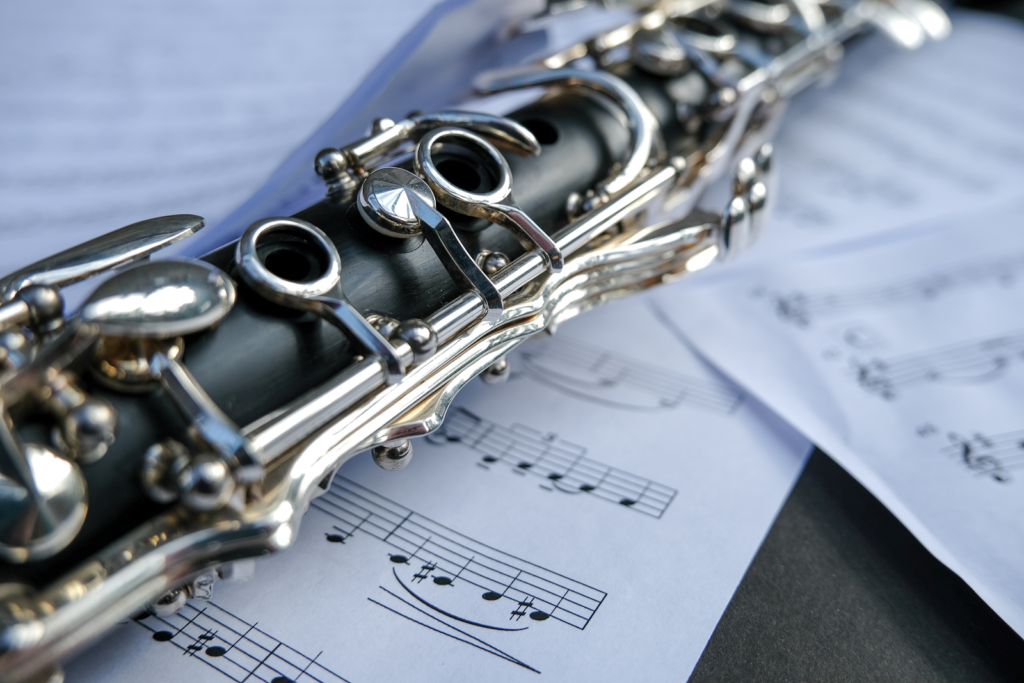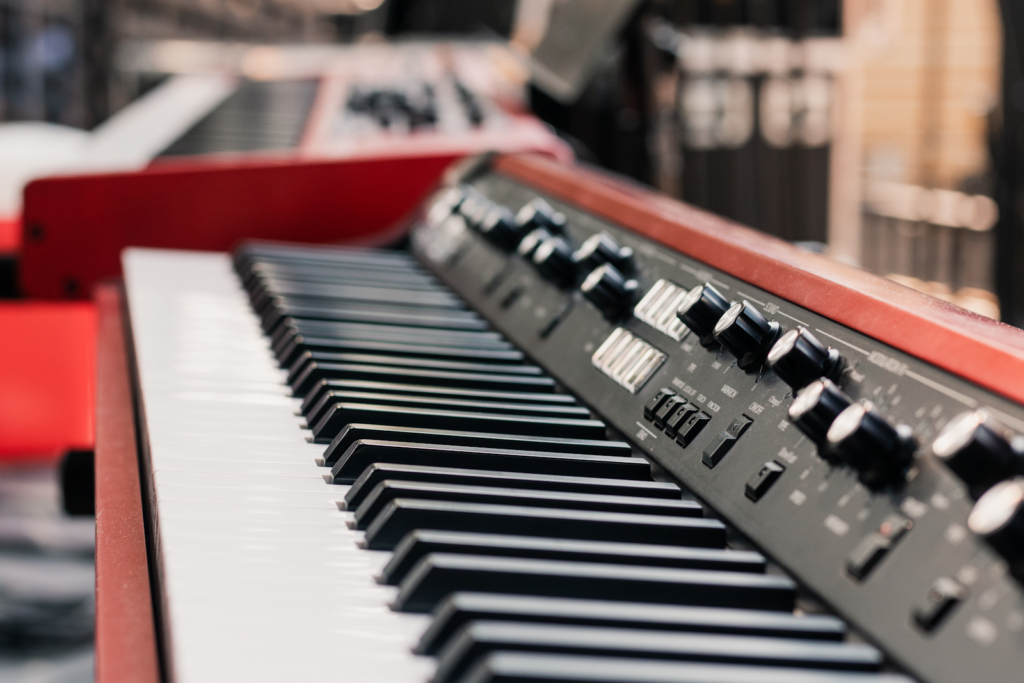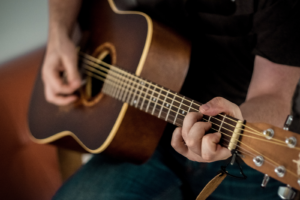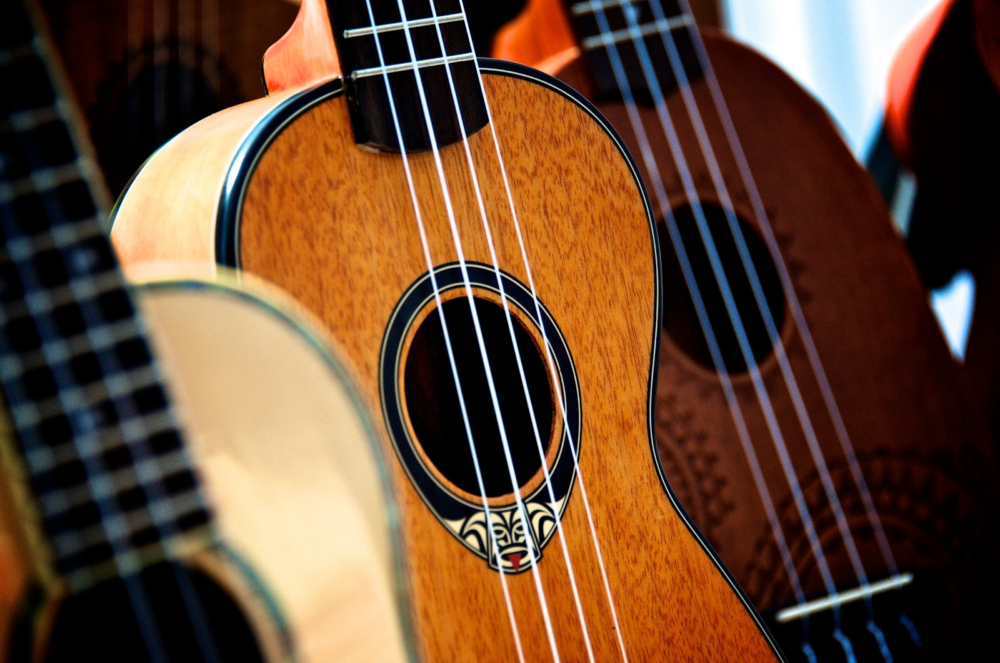Deciding to play a musical instrument can be both exciting and daunting. While mastering any musical instrument requires time, dedication, and practice, some are a lot more accessible for beginners. If you’re wondering about the easiest musical instruments to learn, you’re in for a treat. We’ll delve into the world of musical instruments, highlighting some that are particularly beginner-friendly.
The Ten Easiest Instruments to Learn
1. Ukulele

The ukulele, a small, guitar-like instrument originally from Hawaii, has gained significant popularity worldwide in recent years. With its cheerful sound and compact size, it’s no wonder many consider the ukulele as the easiest instrument to learn.
The ukulele typically has four strings, which, when strummed or plucked, produce a bright and melodious sound. You play it like a guitar, using your fingers or a pick.
Why is it Easier than Others?
Fewer Strings than a Guitar: With just four nylon strings compared to the six on a regular acoustic or electric guitar or four on a bass guitar, it’s simpler to grasp basic chords and strumming patterns. Nylon strings are also more forgiving than steel strings and easier to play.
Size: Its compact size makes it easier to hold, especially for younger players.
Minimal Music Theory: While knowing theory can enhance your playing, you can quickly start playing your favorite songs on a ukulele with basic chord knowledge.
The ukulele is not just an easy instrument; it’s a fun and portable one. In just a few weeks, you can play along to many of your favorite songs, and its joyful tone is sure to uplift spirits wherever you go. It’s also the best instrument to play if you eventually want to move on to the guitar.
2. Triangle

Often relegated to the background, the triangle is a percussion instrument that has been a staple in various musical settings, from orchestras to folk music. Its simplicity is deceptive, as mastering the triangle’s nuanced sounds can be an art in itself.
The triangle is a bar of metal bent into a triangle shape with an open corner. It’s played by striking it with a metal beater, which produces a bright, resonant sound.
Why is it Easier than Others?
Simple Design: Unlike other percussion instruments or a full drum kit, the triangle doesn’t require a set-up. Its design is straightforward, with no moving parts or pieces to assemble.
Basic Technique: While there’s depth to triangle playing techniques, beginners can produce a clear sound with minimal instruction and limited musical skills.
No Need for Theory: Playing the triangle doesn’t require knowledge of scales, chords, or intricate musical theory.
Though it might seem like a basic instrument, the triangle holds its own in many musical compositions. Learning it can offer a gateway into percussion instruments and provides an easy entry point for ensemble playing.
3. Drums

From jazz to rock, the drums are a powerful and dynamic instrument that can express a wide range of emotions.
As a member of the percussion instruments family, they come in various shapes and sizes. A typical drum kit includes a snare drum, bass drum, tom-toms, hi-hat, and cymbals. You play them by striking with sticks or hands.
Why is it Easier than Others?
Natural Rhythm: Many people have an innate sense of rhythm and can easily play a steady beat, making the transition to drums more intuitive than melodic instruments.
Physical Engagement: Unlike instruments that require delicate finger placement, drums are more about full-body engagement. It can be especially appealing for those who enjoy a more physical connection with their musical instrument.
Start Simple: While a full drum kit can seem intimidating, beginners can start with just a snare or a basic beat on the bass drum and slowly expand their skills.
Drums are the heart and soul of many musical genres, from rock to pop songs. Learning them can improve your rhythm, timing, and coordination. Plus, being a drummer can be incredibly fun, allowing you to set the pace for your own music or play along with your favorite songs.
4. Clarinet

The clarinet, with its characteristic warm and mellow sound, is a staple in jazz bands, orchestras, and wind ensembles. Its versatility across genres makes it a popular choice for budding musicians.
The clarinet is a woodwind instrument, typically made of grenadilla wood or plastic for beginner models. It has a single-reed mouthpiece and a cylindrical bore. Sound is produced by blowing air between the reed and the mouthpiece, and different pitches are achieved by opening and closing the instrument’s keys with your fingers.
Why is it Easier than Others?
Limited Keys Initially: Beginners often start with a few basic notes, allowing them to familiarize themselves without feeling overwhelmed.
Lightweight: The lightweight design of this simple instrument makes it easy to hold and maneuver.
Clear Sound Production: Unlike some other woodwind instruments, getting a clear sound out of a clarinet can be achieved relatively quickly with proper instruction. You can play music in no time.
The clarinet provides a rich musical foundation. Its presence in various musical genres, from classical to jazz, offers learners a broad spectrum of styles to explore. Plus, the skills acquired can easily transfer to other woodwind instruments.
5. Recorder

The recorder, often a child’s first introduction to wind instruments, is both affordable and straightforward, making it the easiest instrument for many people to learn.
This woodwind musical instrument has a whistle-like mouthpiece. It’s played by blowing into the top and covering different combinations of finger holes to produce various pitches.
Why is it Easier than Others?
Simple Design: With no keys or reeds to manage, the recorder’s design is straightforward.
Early Success: Beginners can play simple melodies quickly without knowing how to read sheet music, providing immediate gratification.
Foundation for Other Instruments: Learning the recorder can set the stage for transitioning to more complex woodwind instruments later on.
The recorder offers a perfect introduction to reading music and understanding basic theory. Its portability and affordability make it accessible, and its soft, airy sound can be quite enchanting. It’s no wonder it’s one of the most popular instruments for children to learn.
6. Keyboard

The keyboard, encompassing pianos, synthesizers, and digital keyboards, is one of the most versatile musical instruments. From classical sonatas to modern pop hits, it covers a vast musical landscape.
The keyboard consists of a series of black and white keys. Sound is produced when these keys are pressed, either triggering hammers to strike strings (in pianos) or producing digital sounds (in electronic keyboards).
Why is it Easier than Others?
Immediate Sound: Unlike wind or stringed instruments, producing sound on a keyboard is as simple as pressing the piano keys.
Visual Layout: The linear layout of keys visually represents musical pitches, aiding in understanding scales and chords.
Variety of Sizes: From large pianos to compact electronic keyboards, there’s a size suitable for everyone, making it an easy instrument for any setting.
A keyboard offers a solid foundation in music theory. Learning it can open doors to various musical genres, songwriting, and even music production. Its wide range allows for both melody and harmony, making solo performances fulfilling. And with piano lessons widely available at all prices, this instrument is accessible to many.
7. Guitar

The guitar, both electric and acoustic, is a beloved instrument worldwide. Its captivating sound, combined with its portability, has made it central in countless musical genres.
The guitar is a stringed musical instrument, usually with six strings. Sound is produced by plucking or strumming the strings while pressing down on them at various points along the fretboard, changing the pitch.
Why is it Easier than Others?
Chordal Instrument: Playing chords (multiple notes simultaneously) allows beginners to accompany their favorite songs quickly.
Variety of Resources: The guitar’s popularity means a wealth of resources, from online tutorials to tablatures, aiding in self-learning.
Physical Feedback: Feeling the strings and frets provides tactile feedback, helping learners understand hand positioning and pressure.
The guitar’s versatility means it fits into almost any musical scenario, from campfires to concerts. Whether strumming simple chords or playing intricate solos, the guitar can express a vast range of emotions. Its portability ensures that your music can always be with you, ready to serenade at a moment’s notice. And if you’re familiar with the ukulele, you’ll find the guitar the easiest instrument to learn after that.
8. Harmonica

The harmonica, often referred to as a mouth organ or blues harp, is a pocket-sized powerhouse that has become synonymous with genres like blues, country, and folk. Its compact size and distinctive sound have endeared it to many.
The harmonica consists of multiple reeds set within chambers. These reeds vibrate and produce sound when the player exhales or inhales through the instrument’s holes. Different notes can be achieved depending on where you blow or draw and with various techniques like bending.
Why is it Easier than Others?
Portability: One of the most portable musical instruments, it fits easily in a pocket, allowing for spontaneous music-making.
No Need for Scales: While advanced players can delve deep, beginners can start playing tunes without needing to master scales.
Natural Breathing Technique: Playing the harmonica involves breathing techniques that many find intuitive and even therapeutic.
The harmonica is not just an easy instrument to start with; it’s also immensely expressive. Perfect for solo performances, jamming with friends, or accompanying other instruments, its versatility is undeniable. Plus, its connection to breathwork can be meditative and beneficial for lung health.
9. Flute

The flute, with its ethereal sound, is a principal instrument in orchestras and bands. Its rich history spans various cultures, from ancient civilizations to contemporary music settings.
The flute is a woodwind instrument, but it doesn’t typically use reeds. Sound is produced by blowing across a hole at one end. The fingers open and close keys along the body, altering the pitch.
Why is it Easier than Others?
Lightweight Design: Made usually of metal (or wood for some traditional flutes), its design is lightweight and easy to handle.
Simple Finger Placement: Unlike some instruments where finger placement needs to be very precise, the flute’s keys assist in producing clear notes.
Direct Sound Production: Once the embouchure (lip shape) is mastered, producing a sound is direct and straightforward.
The flute’s sound is both powerful and delicate, making it suitable for various musical genres, from classical to jazz. Learning the flute can improve breath control and posture. Its elegant sound and design make it one of the best and easiest instruments to learn.
10. Voice

Arguably the most personal and unique of all instruments, the voice is the primal medium of musical expression. Every culture has its vocal traditions, from lullabies to anthems, making singing a universal language.
The voice is produced by the vibration of the vocal cords within the larynx. By controlling the airflow, tension on the vocal cords, and shaping the vocal tract, we produce various pitches and timbres.
Why is it Easier than Others?
Natural Instrument: Everyone possesses a voice, making it the most accessible instrument.
Immediate Feedback: You can hear and feel your voice, providing real-time feedback for adjustments.
Versatility: The voice can mimic other instruments, produce rhythms, and convey deep emotions, making it immensely versatile.
Singing is not just about hitting the right notes; it’s a profound mode of self-expression. It can be therapeutic, helping in emotional release and boosting confidence. Whether you’re singing in a choir, going solo, or simply humming along to your favorite verses, using your voice is a deeply personal and rewarding experience.
Conclusion
Every musical journey begins with a single note. The vast world of musical instruments offers a myriad of opportunities. Whether it’s the ethereal strains of a flute, the earthy tones of a harmonica, or the raw emotion of the human voice, each instrument presents its unique joys and challenges.
Remember, the easiest instrument to learn is often the one that speaks to your heart the most. So, listen to that inner melody, pick up an instrument, and let your musical story unfold. After all, music isn’t just about mastering notes; it’s about expressing the inexpressible, transcending boundaries, and connecting souls. Whatever your choice, the world of music awaits with open arms. Dive in and lose yourself in the mesmerizing realm of rhythms, melodies, and harmonies.


